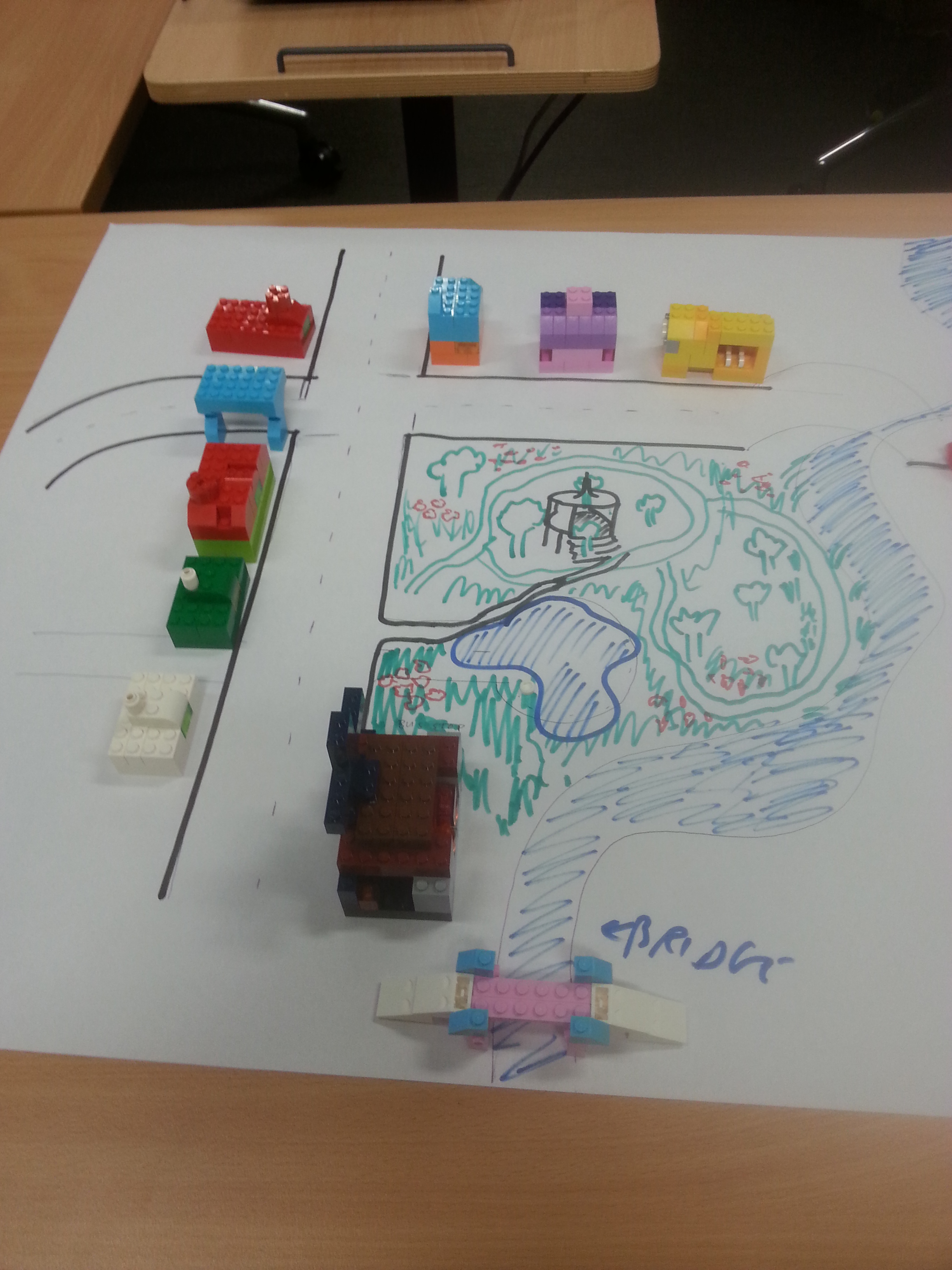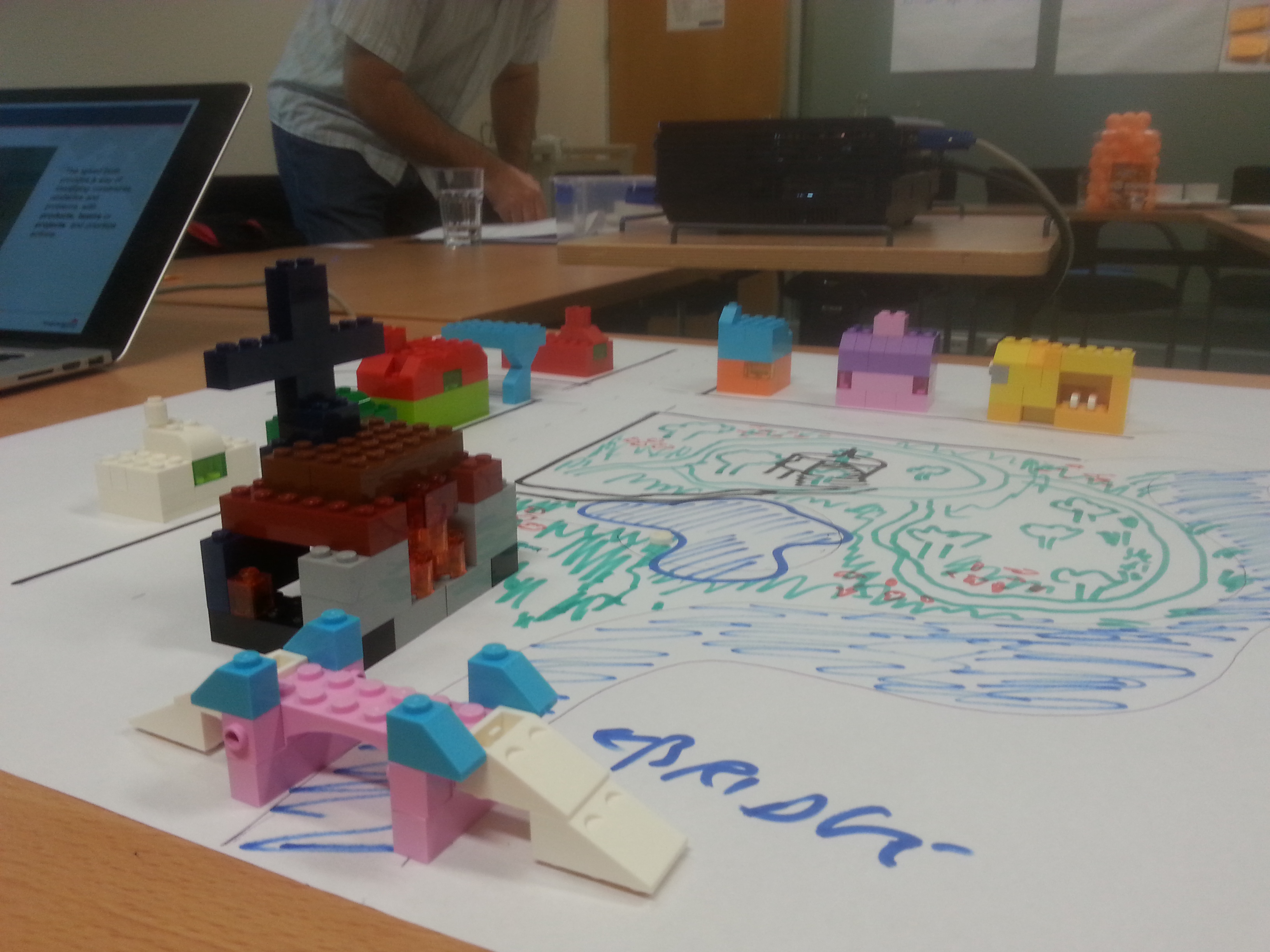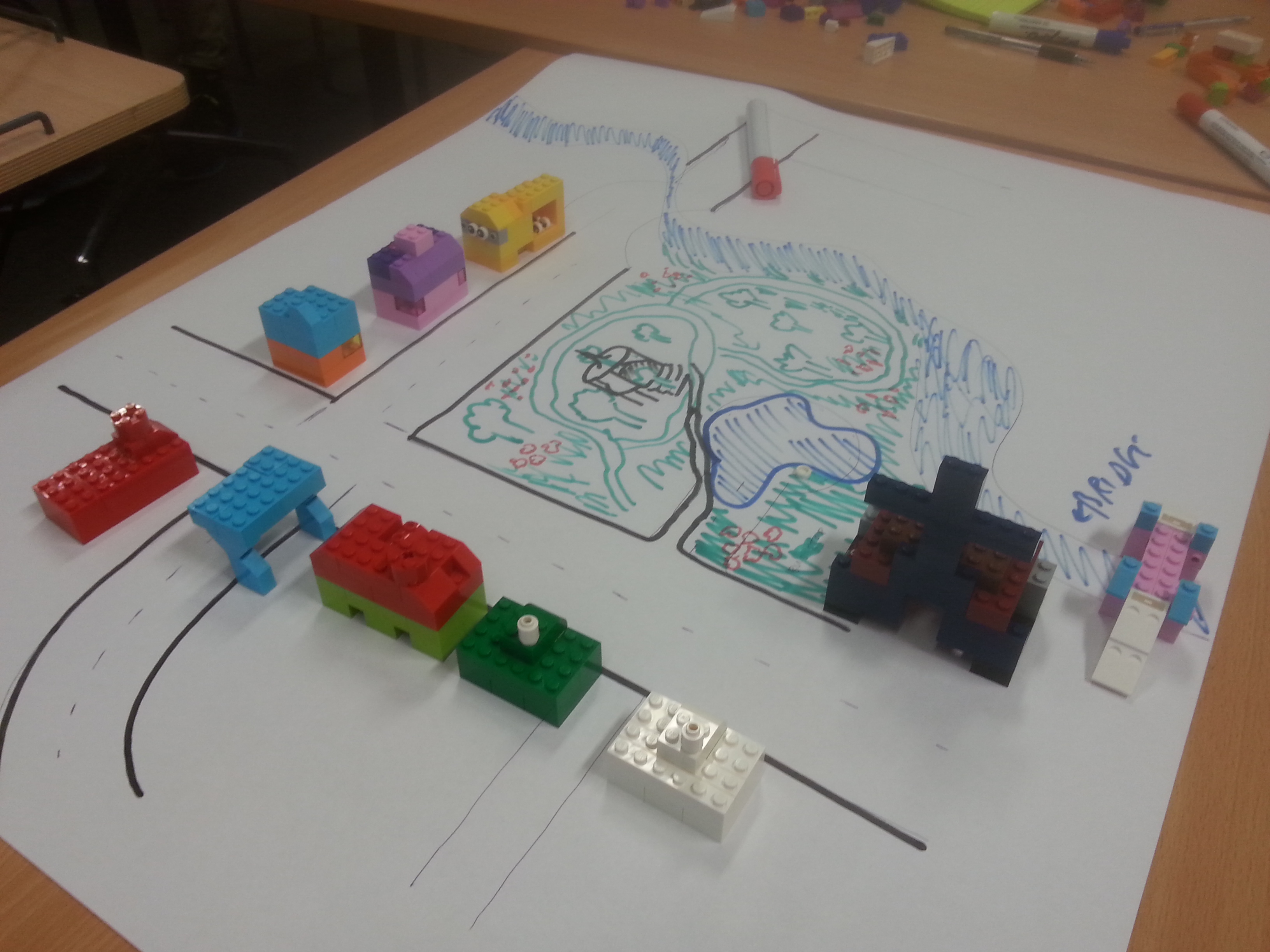Sprinting through Lego city
I was recently asked to deliver a one day Scrum workshop that was supposed to conclude with an agile project simulation activity, but there was no specific guidance as to which activity to use. I’ve used several different types of process miniature for agile project management. A few years ago I even wrote one, the Agile (Technique) Hour, with a colleague in the UK, and I use the XP Game with my students. I’ve also found the use of Lego to be a good way to make activities suitably tactile and creative, in particular I’ve used the latest version of Lego Mindstorms with my my post grad students.
Pondering what to do in the workshop I looked for something that used Lego but was also Scrum-specific. It didn’t take long to find the Scrum Simulation with Lego by Alex Krivitsky. It’s a pretty simple simulation, using the most basic Lego bricks, but works well. The team have to build a city, over three sprints, from a product backlog of story cards provided by the product owner. The best things that came out of our exercise were, I think, the following:
- I deliberately didn’t give the team story priorities, or business values. Like an unhelpful customer I told them all my requirements were equally important. All they had were effort points. As a consequence I ended up with a city with no schools or hospitals.
- In the first sprint I gave only one of the three ‘C’s the (story) card. I didn’t give them either the conversation (clarifying requirements) or the confirmation (defining acceptance criteria.) As a result the buildings at the end of sprint one were terrible and I rejected nearly all of them. Like a typical customer I didn’t know what I wanted, but I knew that I didn’t want what they had done. After the review and retrospective, quality improved hugely in the second sprint.
- In the second sprint the team knew much better what their task was, but their teamwork was dysfunctional. Some found themselves idle while others did their own thing. Again, following the review and retrospective, teamwork improved remarkably in sprint three.
- Team velocity was all over the place, (the burndown chart looked like a difficult ski run), but in the end they could have done more stories in sprint three than they had scheduled. They asked if they should add in more stories from the product backlog. I told them no, if you find you finish a sprint early go down the pub. I didn’t get my schools or hospitals, but in real life, I would have a happier team.
Here’s my team’s Lego city. Note the stained glass window in the church and the wheels in the bicycle shop. Good work team!



